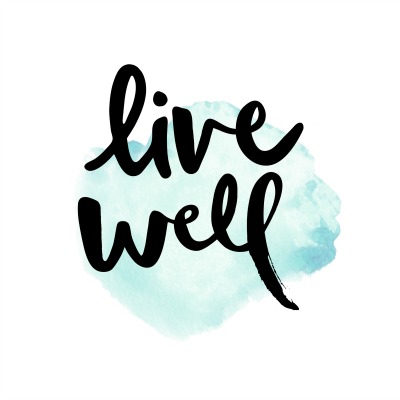
How to Make—and Keep—Your New Year’s Resolution
As the new year approaches, you may find yourself reflecting on the past year. This introspection is a significant first step toward selecting a New Year’s resolution to help you grow as a person. However, 80% of New Year’s resolutions fail by mid-February due to a lack of self-discipline, according to U.S. News and World Report. That’s why it’s important to set yourself up for success when you’re choosing a resolution.

Regardless of what you choose as your resolution, make sure it’s a “SMART” goal—one that is specific, measurable, attainable, realistic and timely—to increase the odds that you will stick to it. Here’s what that means:
- Specific—A specific goal is simple and strategic. It’s something you can easily conceptualize. For example, instead of saying you’ll eat healthier, be specific about how you can actually do that (e.g., eat a vegetable at every meal, eat breakfast every day or eat fish twice a week).
- Measurable—A measurable goal is quantified. You’ll be able to see if you’re making progress as you go. For example, if you want to save $500 for your emergency fund or save for a down payment on a home, you’ll be able to track your savings and prove you’re making progress along the way.
- Achievable—An achievable goal is realistic and attainable. If you’ve never worked out before, a daily workout goal won’t likely be feasible or sustainable in the long run. Alternatively, if you’re already taking walks, start with increasing the duration or frequency of them.
- Relevant—A relevant goal needs to make sense or be appropriate to you. You want your goal to matter, so reflect on the past year about what’s working in your life and what’s not. Timing is equally important, so ensure this is the right time for you to tackle the resolution.
- Timely—A timely goal is accomplished within a specific time frame. You can adjust this period as needed and make new goals or deadlines after achieving the first one.
Remember that New Year’s resolutions don’t have to be health-related, so find what matters to you to help you live a better life in 2022.
Don’t Let Winter Derail Your Workout
If you find it harder to keep up with your workouts as the temperatures drop, you’re not alone. Many Americans find it increasingly difficult to remain committed as the holiday blues, shorter days and less-than-ideal weather create obstacles. Whether you’re a gym-goer or outdoor exerciser, there are simple ways to overcome winter obstacles and keep your fitness on track:
- Remember to warm up. If you’re an outdoor exerciser and the weather is colder, try doing your warmup inside. Not only will you raise your internal body temperature before going outside, but you’ll also increase the temperature of your muscles, which can reduce your risk for injury.
- Prep the night before. If you’re an early morning exerciser, set out everything you need for the next day the night before. Then, all you need to do when your alarm goes off is get up, get dressed and go to the gym.
- Have a backup plan. Even the most dedicated exercisers can lose their motivation. That’s why it’s essential to have a backup workout plan that you can do at home. It doesn’t have to be lengthy, as doing something is better than doing nothing at all.
Staying on top of your fitness during winter can be challenging but keep pushing and think about why you work out in the first place. Focus on your reason.

The Health Benefits of Being Organized
The new year can signal a fresh start for many. As such, January is dubbed Get Organized Month as many people are eager to tackle their homes’ organization. Decluttering can do more for your health than you may realize. Consider the following health benefits of being organized:
- Boost your energy and productivity. A messy area may make you feel confused or scattered. When your space is clutter-free, you can focus more on meaningful activities.
- Reduce your stress and anxiety. By eliminating clutter, you’ll feel more in control and able to handle challenges that come your way.
- Sleep better. When you keep up with the organization, you can rest easy at night knowing that everything is cleaned up and in its place.
- Eat healthier. Not only does snack and food organization reduce clutter, but it can also help you easily grab healthy options and control portions.
This month is a great time to get organized and set yourself up for a clutter-free year to feel more balanced.

Makes: 6 servings
Ingredients
3 pounds skinless chicken pieces
½ tsp. salt
¼ tsp. black pepper
1 onion (chopped)
1 cup celery (chopped)
3 large carrots (thinly sliced)
4 cups dry noodles
Thyme or sage (optional)
Preparations
- Thaw frozen chicken before cooking.
- Place chicken in large kettle and cover completely with water. Cover pot, bring to a boil, reduce heat and simmer 2 to 3 hours.
- Remove cooked chicken from the broth. Cool 10 to 15 minutes before separating bones from the meat. Break meat into bite-size pieces.
- Remove any bones and fat from broth.
- Put chicken meat, seasonings and vegetables into the stock.
- Bring the broth to a boil, cover, reduce heat and cook on medium heat for about 15 to 20 minutes until carrots are crisp-tender.
- Add the noodles and boil uncovered for about 6 to 7 minutes, stirring occasionally to break up any noodles.
Nutritional Information
(per serving)
| Total calories | 276 |
| Total fat | 5 g |
| Protein | 32 g |
| Sodium | 338 mg |
| Carbohydrate | 24 g |
| Dietary fiber | 2 g |
| Saturated fat | 1 g |
| Total sugars | 3 g |




